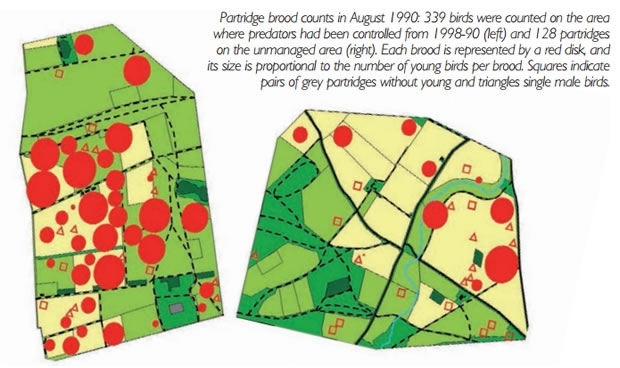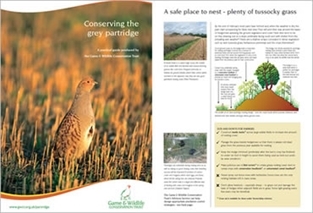 GWCT Head of Predation Control Studies Jonathan Reynolds and Wetlands Ecologist Carlos Sanchez look back at the important impact that the Salisbury Plain project had on understanding predation
GWCT Head of Predation Control Studies Jonathan Reynolds and Wetlands Ecologist Carlos Sanchez look back at the important impact that the Salisbury Plain project had on understanding predation
It is now 20 years since Stephen Tapper, Dick Potts and Malcolm Brockless published the results of the Salisbury Plain Experiment, a landmark project researching the impact of predation on grey partridges.
A difference of opinion
At the time, opinions were divided about the significance of predators for the long-term fortunes of their prey species. Those involved in the game management camp could point to a long history of using predator control as a tool for managing game species, alongside careful habitat management.
Among academics and conservationists, however, the prevailing view was that predator density was dependent on prey density, not vice versa. They argued that while predator control left more gamebirds available to shoot, these were effectively a doomed surplus that would not contribute to changes in breeding density from year to year.
Predation – in their view – was not a driver of population trends, and therefore predator control had no relevance to conservation issues.
The experiment
The GWCT’s six-year experiment aimed to test the effects of predator removal on the densities of grey partridges. Two well-separated experimental areas of 564ha and 496ha were selected on Salisbury Plain
in Wiltshire. No changes were made to habitat, but on one area foxes, corvids, stoats, weasels and rats were controlled during the partridge breeding season (from March to July) for three years.
The other area was monitored as a comparison but otherwise left alone. After three years the two treatments were flipped between the sites, creating a neat experimental design that allowed results to be attributed unambiguously to the effects of site, year or predator control. Partridges were counted in spring and autumn, and the numbers of predators were monitored during the whole study on both areas.
The results
Predator removal increased the number of partridges counted in August by 75%; but also there were 36% more breeding pairs in years following predator control than after years without predator removal. These differences built up over successive years: after three years of predator control partridge breeding density was on average 2.6 times what it was without predator control.
Predator abundance was appreciably reduced during the partridge breeding season, but was replenished each year when the control effort finished.

The study's legacy
This milestone study demonstrated the effect of common native predators on one native gamebird species, and illustrated the effectiveness of seasonally-focused predator control as a management tool. It is encouraging to see how often the paper has been quoted by other scientists (more than 225 times at the time of writing) and the way that GWCT research has inspired many practitioners to start similar demonstration projects across Europe. The paper can be downloaded free here >
Get your FREE Grey Partridge Conservation Guide
An essential guide to conserving the grey partridge produced by the Game & Wildlife Conservation Trust.
What's inside your FREE guide
✓ The decline of a common farmland bird
✓ A safe place to nest - plenty of tussocky grass
✓ Chick survival - insect food is crucial
✓ Surviving winter and spring - food and cover
✓ Conservation targets - Partridge Count Scheme
✓ Grey partridges and shooting
✓ Common questions
Download guide now >